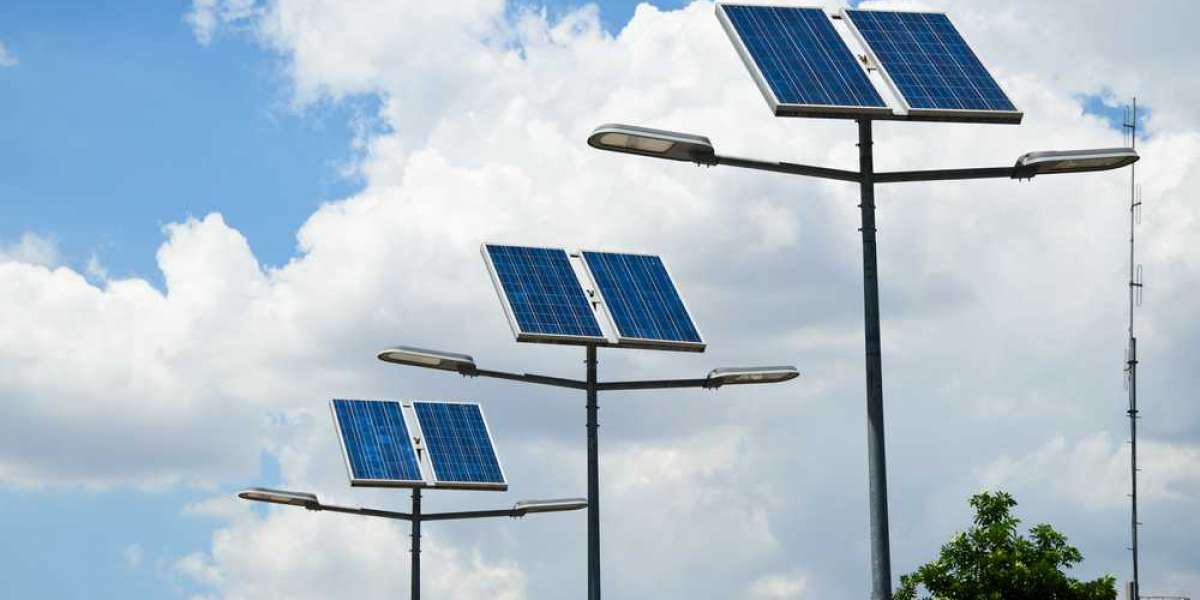For example, you can get a solar charger that will power up AA, AAA and other common household batteries. This lets you tap into solar power in a variety of different devices, from flashlights to radios to those smoke detectors that start to beep every year or so when their batteries need changing.
Battery-powered electrical devices are especially helpful to keep the lights on during winter power outages.
A variation on a battery charger is a small solar panel that plugs directly into a mobile phone or laptop computer. There are even “wearable” versions of this kind of super-portable solar panel that are attached to a backpack or sewn onto a piece of clothing such as a windbreaker or baseball cap.
Another easy way to get started with solar is to use lighting that comes with its own solar panel, such as a spotlight for your driveway. The panel charges during the day and then powers the light at night, just when you need the illumination.
An increasingly popular version of solar lighting this year is solar Christmas lights, according to an independent review site called, not surprisingly, Solar Christmas Lights. The site offers a wealth of information for people thinking of making the switch from traditional holiday strands to festive solar LED lights. Here, I’ll sum up three main points so you can decide if you want to know more about going solar for your holiday lights this Christmas.
Read More How to Clean Solar Panels on Garden Lights
1. How Solar Christmas Lights Work
Strands of solar Christmas lights are similar to the solar-powered light in front of a garage that lights up the driveway. A photovoltaic solar panel located outside of your home generates electricity during the day that it stores in a battery until the light comes on automatically at night.
The battery is usually nickel-metal hydride (NiMH) and the lights are usually LEDs, the most efficient lighting widely available today.
As with a garage light, both the solar panel and the lights themselves can be located outside your house. It’s most common to use solar string lights outside. But you can also use solar-powered light strands inside the house, on your Christmas tree or strung atop a doorway.
2. The Advantages of Solar Christmas Lights
Perhaps the main advantage of powering your Christmas lights with solar is convenience. Since you don’t need to find an outdoor outlet to plug solar lights into, you can be more creative with stringing lights over a tree at the far end of your yard or on the bushes by your front gate. No more worrying with extension cords either, which makes waterproof solar lights safer.
Depending on your electric rates — and how many lights you use — going solar for Christmas lights can save real money on your electric bill too, just when you need extra cash to put presents under the tree. If you use solar, you can go crazy with the lighting almost guilt-free, since you’re making your own free power from the sun.
Another way you’ll save money is that LED lights are about ten times more efficient than those old incandescent bulbs that Christmas lights used in the past, which means you won’t have to replace bulbs or whole strands like you used to. And, since they use clean power from the sun instead of electricity from dirty fossil fuels, solar lights are friendlier to the environment too.
Read More 5 Tips to Make Solar LED Lights Last Longer
3. Disadvantages of Solar Christmas Lights
Before you run out and buy solar-powered Christmas lights, you should consider the disadvantages.
Since LEDs give a different light than incandescents, you may notice a difference in color with solar lighting. And of course you’ll have to put the solar panels where they’ll get enough sun to charge the batteries for the lights, which can be a challenge in the short days of December.
But the main issue is upfront cost. While solar lights will save you money over the long term in both electricity and replacing lights, initially you’ll spend more to go solar. As the solar Christmas light website puts it, “On average, forty feet of solar LED Christmas lights costs $35. If you’re planning on buying a lot of light strands, the initial bill will add up fast.”
How to Make A Solar Christmas More Affordable
So, if you want to go solar on your holiday lighting, you can make it less expensive to gradually replace your traditional strands a few each year rather than making the transition in one Christmas season. And the good news is that, like other LED lighting, solar Christmas lights will probably keep getting cheaper each year.
Follow For More BLLS-Lighting




